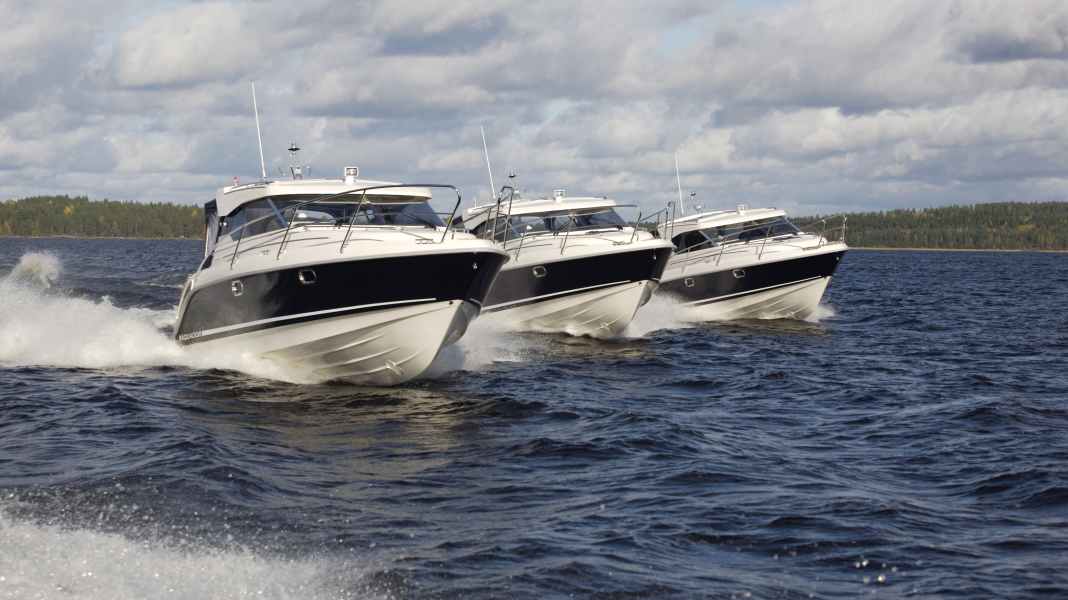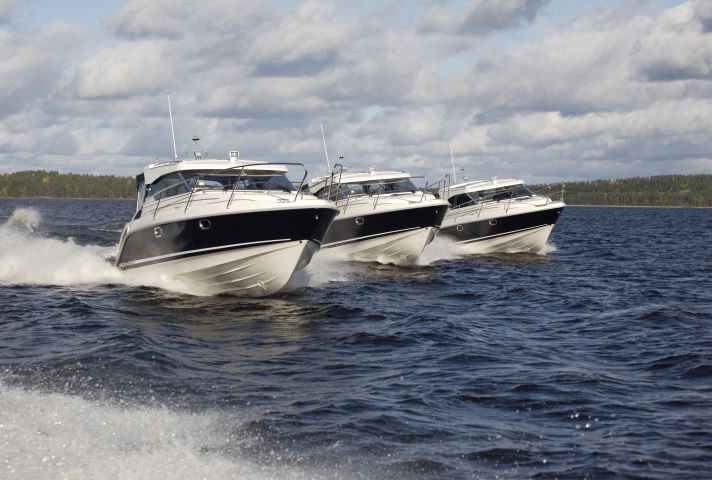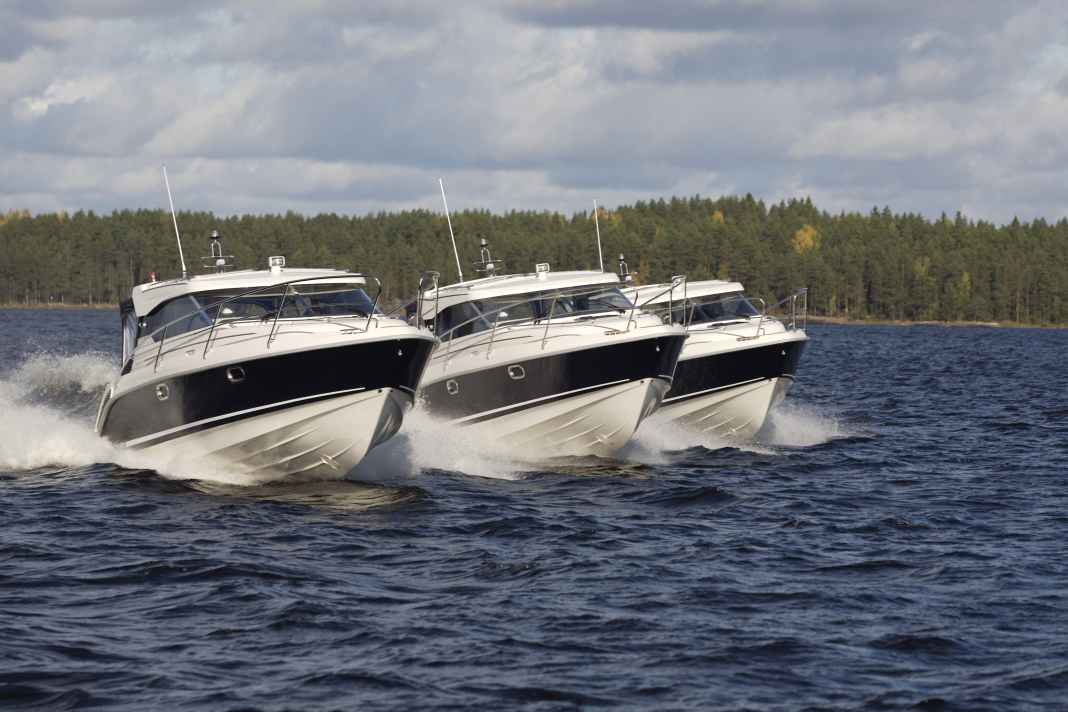







We drove three diesel models in identical 28-foot sports boats from the Aquador brand, which is manufactured by the Finnish shipyard Bella Boats. In addition to a length of 8.80 metres and a width of 3.10 metres, the 28 HT weighs in at an impressive 3200 kg without the engine. The maximum permissible weight with engine and gearbox is stated by the shipyard as 5300 kg. The boat is equipped with four plus two berths, a generously proportioned cockpit, galley and toilet room. In addition to hydraulic steering, the shipyard has installed trim tabs for optimum manoeuvrability. The customer has a good choice of engine (single) in terms of manufacturer and power. The Aquador 28 HT can be equipped with engines from 260 hp to 370 hp.
What all three of the engine systems we drove have in common is that they deliver their power of 350 hp with the Cummins TDI 4.2 and 370 hp with the Volvo Penta D6-370 and Yanmar 8LV-370Z to the water via a sterndrive. These outputs are at the upper limit of the Aquador's capabilities. The built-in fuel tank has a capacity of 380 litres, leaving 323 litres for sailing minus a 15% reserve.
Measurement results are one thing, perceived power delivery is another. With the Volvo Penta D6-370, a high torque is noticeable even at low engine speeds. Acceleration is constant over the entire speed range with low noise levels. The reason for this is the twin supercharging by compressor and turbocharger. The latter was selected by Volvo Penta's engineers in such a way that it only reaches its optimum working range at higher engine speeds. The electrically controlled supercharger breathes life into the 5499 cc displacement until the pressure generated by the turbo is sufficient. The engine speed and power trim are controlled in the Volvo via a handy single-lever control.
When accelerating, the Yanmar is somewhat sluggish up to 2000 rpm. However, when the engine speed rises above this, the two turbochargers really breathe life into the engine. The 4461 cc displacement is calculated from a cylinder bore diameter of 86 mm and a piston stroke of 96 mm. The Japanese engine manufacturer gives the rated speed as 3800 rpm. Its 550 kg in dry condition does not earn it the "lightest in the test" badge. However, the comparison - 220 kg less than the Volvo and 81 kg more than the Cummins - puts the weight into perspective. The 469 kg of the Cummins TDI is unbeaten in our test. When the TDI is installed, the boat can be loaded with 301 kg more than the Volvo. Cummins achieves the 350 hp with the help of common-rail and two turbochargers with variable exhaust geometries. The engine is still familiar to many from the Volkswagen Marine division, which was taken over by Cummins at the beginning of the year.
YOU CAN READ THE ENTIRE TEST IN THE CURRENT ISSUE OF BOOTE.
